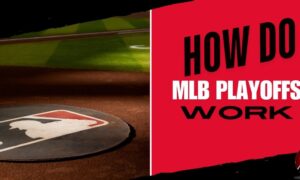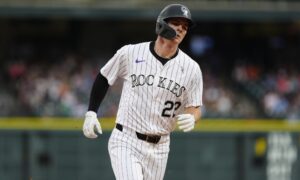Have you heard about the Miracle Mets?
After joining the National League in 1962, the New York Mets for most of the decade were known as the lovable laughing stock of the MLB.
In a year that also had the amazing accomplishment of reaching the moon, the Mets pulled off another achievement that seemed to be impossible, and that was capturing their first World Series title.
The Mets started their run in the MLB with an atrocious opening campaign in 1962. This season saw them lose a current modern-day record of 120 games. They would go on to lose an average of 108 games for their first six seasons as an MLB franchise.
The Start of Something New
The 1967 season for the New York Mets saw a bit of change that would lead to their incredible run in 1969.
That change came with the acquisition of three youngin’ pitchers that would change the trajectory of their franchise.
Insert Tom Seaver, Nolan Ryan, and Jerry Koosman.
Seaver, a USC grad, would be picked up after a previous deal that tied him to the Atlanta Braves was nixed due to college eligibility rules.
Koosman was brought up from the Minors after leading the league in strikeouts and broke into the Mets rotation consistently in 1968.
And then there was Nolan Ryan. That’s right, young Nolan Ryan, who would go on to lead the MLB All-Time in almost every pitching statistical category over his 27-year career.
The Mets would also bring in a new coach and bid good riddance to manager Casey Stengel. His replacement would be Gil Hodges, one of the Brooklyn Dodgers’ Boys of Summer. He was acquired in a deal from the Washington Senators for $100,000 and pitcher Bill Denehy.
Under Hodges, the Mets would crawl themselves up to ninth in the 10-team National League race in 1968. While that does not sound like much of an improvement, the Mets had finished last every year prior, and the team’s 73-89 record was easily its best yet. Hodges’ tough-minded treatment of his players earned their respect, and it felt like the Mets may have finally turned the corner of being completely awful to just bad.
The Miracle Season
But despite their improved 1968 season, many papers and reporters still doubted the Mets. Some even disrespected their name and went as far as to say the new expansion team. The Montreal Expos would finish in front of them in the newly created National League East, which featured six teams.
And the pundits would seem to be right after Opening Day, with the Mets losing a close one to the Expos 11-10 at Shea Stadium in New York.
After sitting below for much of the season and heading into June, the Mets would mark off 11 straight victories. But it did not seem to impact everyone’s thoughts of the Mets. People were instead focused on the surging Chicago Cubs. 38-year-old Ernie Banks had the Cubs on a mission to reach his first postseason ever.
After going back and forth in their next couple of series, the Mets found the winning formula. Starting with their 42nd game, the Mets went 82–39 (a .678 winning percentage), including an astonishing 38–11 in their last 49 games.
After trailing the Chicago Cubs for much of the season, the Mets were placed in third place in the National League East, a vast 10 games back.
But come August 14th, they would go on to win 14 of their last 17 games during August, and 24 of 32 games during September and October, to surge past the Cubs. They would finish 100–62, placing them at the top of the NL East and a significant eight games ahead of the Cubs. That 18 game differential is one of the largest turnarounds in MLB history.
The key to this run was truly in their pitching. Tom Seaver and Jerry Koosman would both be named All-Stars, and Seaver would be awarded the Cy Young Award, the first of three in his historic career.
Seaver boasted a record of 25-7 on the year with an astounding 2.08 ERA and 208 strikeouts. Koosman’s All-Star campaign saw him strike out 180 batters, hold an ERA of 2.28, and he notched off 17 wins in 241 innings pitched.
Nolan Ryan was great in his limited action after dealing with groin issues throughout the season. He struck out 92 batters in 89 innings.
Offensively, they were led by Tommie Agee and 1969 All-Star Cleon Jones. Jones and Agee were the only two starters to clear 70 RBI’s as the Mets would dish out many different lineups depending on the matchups.
The lineup was heavily platooned, something that may have given them an end-of-season advantage over the unrested Chicago Cubs, who finished the season 16-25 in their last 41 games. Sadly, for previously mentioned 38-year-old Ernie Banks, this would be the closest he ever came to making the playoffs in his 19-year career.
Nearly Perfect Postseason
Since Major League Baseball at the time was only composed of 24 teams, two 6-team divisions for both the National League and American League, the Mets had made it directly to the National League Championship Series against the Atlanta Braves.
The relatively inexperienced Mets were looked at as the underdogs in this series despite their better season record and their better record in the head-to-head matchups. This was due to the previous postseason success of the Atlanta Braves with the likes of Hank Aaron. The Braves had also won their last 17 of 21 games, going on a streak like the Mets.
The pundits turned out to be wrong again, and the Mets would go on to sweep the Braves 3-0. Here is the other shocking part of this series, the Mets pitching would struggle, and the bats of the New York Mets would bail them out and hit three home runs each in Games 2 and 3 and would score 9 runs in Game 1.
Lastly came the big show, the World Series Championship. Their opponent, the Baltimore Orioles.
After a few down years following a World Series Title in 1966, the Baltimore Orioles ran through their competition in the American League, finishing with a record of 109-53, a whole 19 games ahead of the 2nd place Detroit Tigers in the AL East division.
Much of that success is attributed to the mentality of “Oriole Way,” which was instituted by their new manager, Earl Weaver.
Baltimore also swept their ALCS series versus the Minnesota Twins, so it was a battle of streaking, dominant teams on the biggest stage.
Heading into Game 1, the Mets were once again underdogs, and like the regular season, the pundits’ first glance seemed to be right. The Orioles would launch a homer off of Tom Seaver on the second pitch of the game courtesy of Don Buford and win by a score of 4-1.
After joining the National League in 1962, the New York Mets for most of the decade were known as the lovable laughing stock of the MLB. But then came the Miracle Mets in 1969.
But then came the Miracle Mets.
In Game 2, Koosman would pitch an absolute gem and retire the first 18 batters leading to a 2-1 Mets victory. Game 3 saw more of the same stellar pitching from a host of Mets.
Gary Gentry pitched 6 and 2/3 shutout innings and helped his own cause with a second-inning two-run double. Then there was Nolan Ryan, making his only World Series appearance of his 27-year career. He pitched the final 2 and a third and earned the save.
Stunning catches by Tommie Agee and Cleon Jones also helped their effort in the 5-0 victory.
Tom Seaver would make up for his Game 1 performance, pitching all innings in a 10 inning barn burner that the Mets would win 2-1. Another unofficial save was handed out to Ron Swoboda, who made a spectacular diving catch to prevent the Orioles from taking the lead in the top of the 9th.
Then came the potential series-deciding Game 5. Fans in New York that were not Yankees fans and were too young to remember the NY Giants and Brooklyn Dodgers were ready to taste the feeling of being World Champions.
The Mets were in trouble early. Dave McNally shut out the Mets through five innings and helped his case with a two-run homer in the third inning. Frank Robinson would add another long bomb in the inning, giving the Orioles a comfortable 3–0 lead.
Controversy then struck with two enormous calls, both going in the Mets’ favor. First, it would appear the Jerry Koosman had struck Orioles batter, Frank Robinson, with a pitch in the top of the 6th. The umpire at home plate ruled that it had hit Frank Robinson’s bat prior to hitting the batter, calling it a foul ball. However, replays would say otherwise.
Then in the next half inning, another controversial hit by pitch came up. It appeared that Cleon Jones was hit by a pitch by McNally. The Orioles argued it hit the dirt prior to it hitting Jones foot/ankle. The Mets, however, “proved” it hit Jones’ shoe by proving there was shoe polish stained on the ball.
The controversy in this game many moons later. On August 22, 2009, at the 40th anniversary celebration of the Mets’ 1969 Championship, held at their new stadium, Citi Field, Jerry Koosman stated in several media interviews that, in actuality, Hodges had instructed him to rub the ball on his shoe, which he did, and after that Hodges showed the ball to the umpire.
Either way, after Jones was walked to first base, Donn Clendenon (The Series MVP) would hit his third homer of the series, a record that still stands for 5 game series but has since been tied.
Al Weis would then hit one of only 7 career Big League home runs in the 7th inning for the Mets to tie the score at 3.
After a mishandled ball in the 8th inning, the Mets would take the lead, and it seemed the Miracle Mets had all but done it. Jerry Koosman would close out his start retiring 19 of the last 21 batters after the shaky 3rd inning.
Dominant pitching was the story of this New York Mets team, and they did not disappoint on the biggest stage.
This win marked the second upset championship in New York in 1969 as the Jets had pulled off their miraculous victory in Super Bowl III on the back of Joe Namath. Half a year later, the Knicks would host an NBA championship in New York. The magic was alive in New York City.
52 years later, this run to the World Series is still one of the most magical and least anticipated achievements of any team in Major League Baseball history. The 2019 Washington Nationals and 2016 Chicago Cubs may rival the legacy of that championship in recent memory.
In the general sense of history, especially in the year 1969, it may not have been as iconic as Armstrong’s walk on the moon or heralded the fanfare of the legendary 72 hours at Woodstock, but the legacy left by the Miracle Mets will forever live in baseball and sports history.









